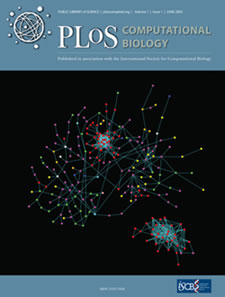
|
{ C O N T E N T S } Volume 8, Issue 2 President's
Letter Advertising and Sponsorship Dr. Janet Thornton PLoS Computational Biology Student Council Undertakes ISCB Student Travel ISMB 2006 Magnificent Madrid to Host Post Your Events and News President Elect Student Council Activities Student Symposium Public Affairs & Policies ACCESS NEWSLETTER ARCHIVES Copyright
© 2005 International Society for Computational Biology. | PLoS
Computational Biology to Launch at ISMB 2005 The launch of PLoS Computational Biology
is only days away - June 24. The response thus far has been tremendous
from the community. |

 At
ISMB, look for our Preview Issue. After that, the inaugural issue
includes a Perspective from Sean Eddy on his belief that we are
in the "ante"-disciplinary phase of our science - a time
ahead of becoming an organized science and not to be confused with
the push toward being "inter"-disciplinary, as many would
have us become. This is followed by a series of research articles,
including: Pagel et al. describe a method for determining pairs
of functionally related genes and then use that method to study
how these pairs are either gained or lost over evolutionary time;
Margalit et al. report on the modeling of transcription factor binding
sites and discover 29 such binding sites for C2H2 zinc-finger proteins
in Drosophila melanogaster; and Ehrenberg et al. model ribosome-mediated
transcriptional attenuation and explain the functional differences
that result from the structural differences of the leader sequences
of the trp and his operons.
At
ISMB, look for our Preview Issue. After that, the inaugural issue
includes a Perspective from Sean Eddy on his belief that we are
in the "ante"-disciplinary phase of our science - a time
ahead of becoming an organized science and not to be confused with
the push toward being "inter"-disciplinary, as many would
have us become. This is followed by a series of research articles,
including: Pagel et al. describe a method for determining pairs
of functionally related genes and then use that method to study
how these pairs are either gained or lost over evolutionary time;
Margalit et al. report on the modeling of transcription factor binding
sites and discover 29 such binding sites for C2H2 zinc-finger proteins
in Drosophila melanogaster; and Ehrenberg et al. model ribosome-mediated
transcriptional attenuation and explain the functional differences
that result from the structural differences of the leader sequences
of the trp and his operons.